Battlefield 1 Performance In DirectX 12: 29 Cards Tested
RX 480 And GTX 1060: Mainstream Vs. High-End
Although we've already seen the GeForce GTX 1060 6GB and Radeon RX 480 8GB on their own charts, combining them helps illustrate the difference host processing and memory can make depending on your game's settings.

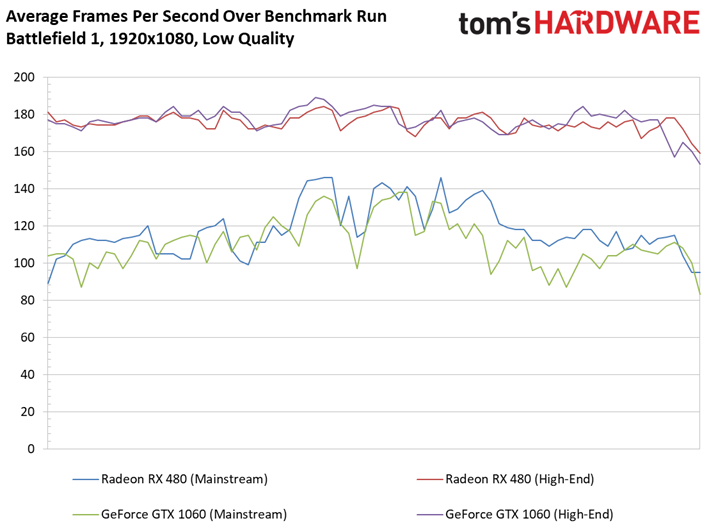



The move from a mainstream FX-8320-based platform to Intel’s Core i7-6700K unlocks tons of performance at processor-bound resolutions and quality settings. But you’re not going to buy a Radeon RX 480 or GeForce GTX 1060 to play at 175 FPS using Battlefield 1’s Low preset at 1920x1080. So we'll call these numbers largely theoretical, regardless of how interesting and illustrative they may be.
Looking for a more realistic comparison, we bump up the quality preset to Ultra and compare them again to gauge the impact of a more graphically demanding workload.
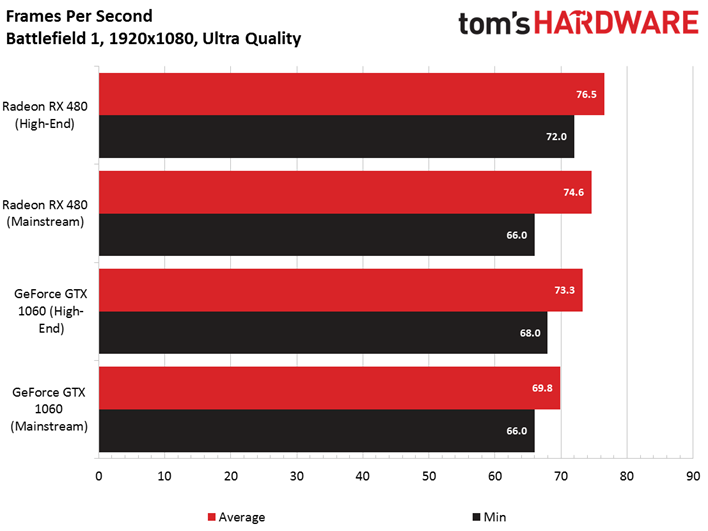

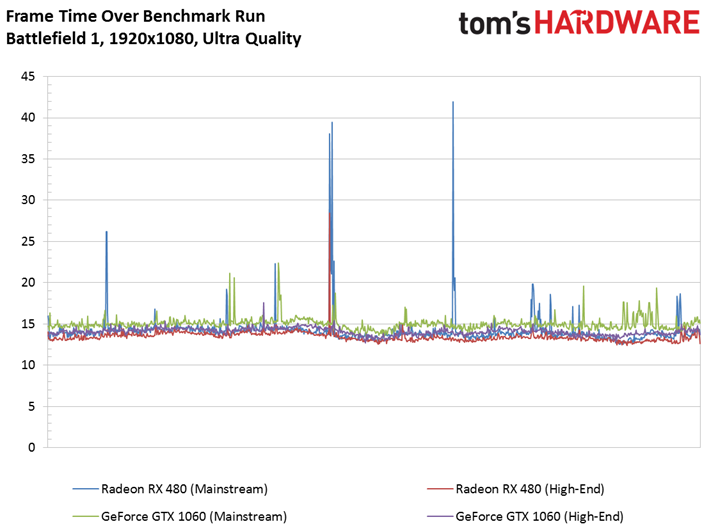
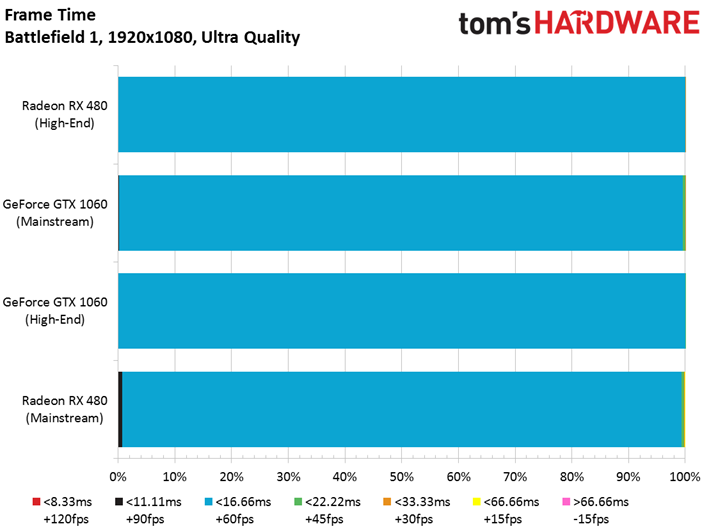
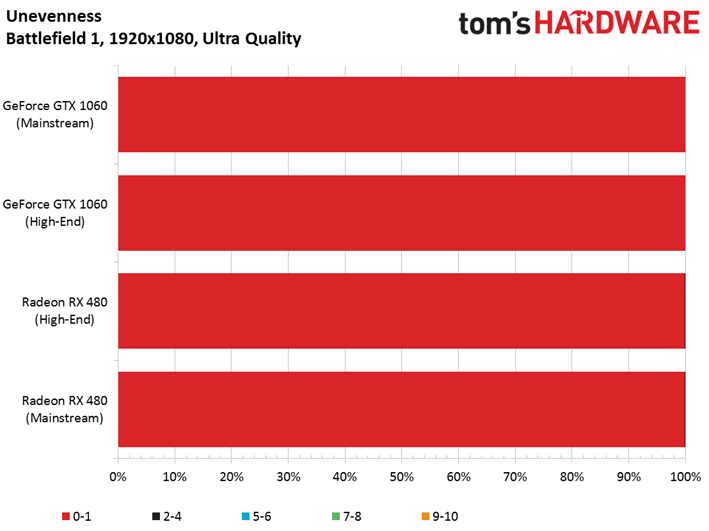
Surprisingly, even at 1920x1080, Battlefield 1 at Ultra quality is GPU-bound enough to bleed off most of the high-end machine's advantage with its preset at Low.
Yes, the Radeon RX 480 on a Z170-based motherboard is fastest, followed by the RX 480 on 990FX. But a mere 2 FPS separate their average frame rates. Their minimums are 6 FPS apart, but even that isn’t especially significant.
Nvidia’s GeForce GTX 1060 is also a bit faster on the Core i7-based PC than when we test with an FX-8320. But its minimums are even closer together—a scant 2 FPS difference.
The only expected outcome we can confirm is that the lower-end platform incurs more instances of elevated frame times, though the spikes don’t get problematically high and aren’t as frequent as we might have expected. We’re not hoping for much excitement at QHD then, where graphics performance should be even more heavily emphasized.
Get Tom's Hardware's best news and in-depth reviews, straight to your inbox.
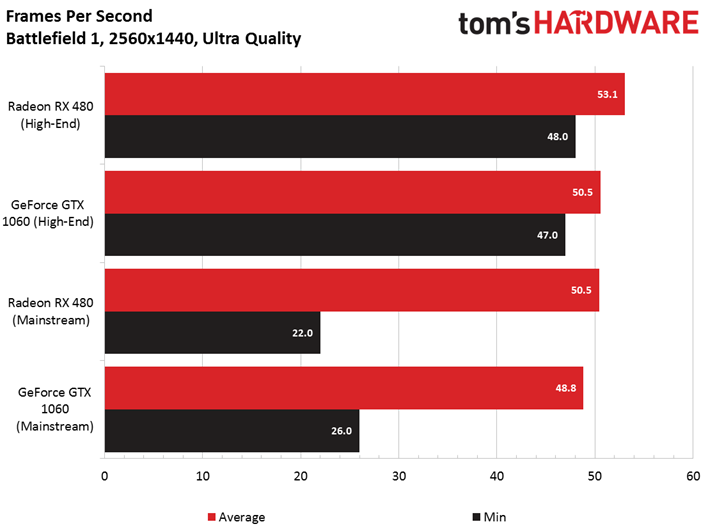
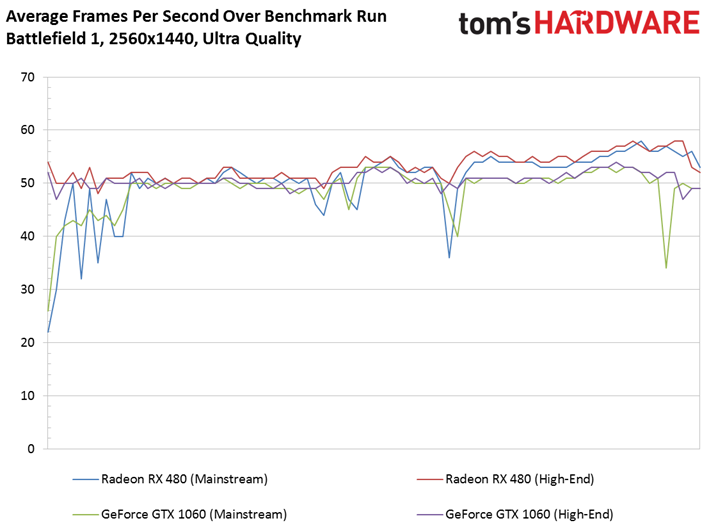
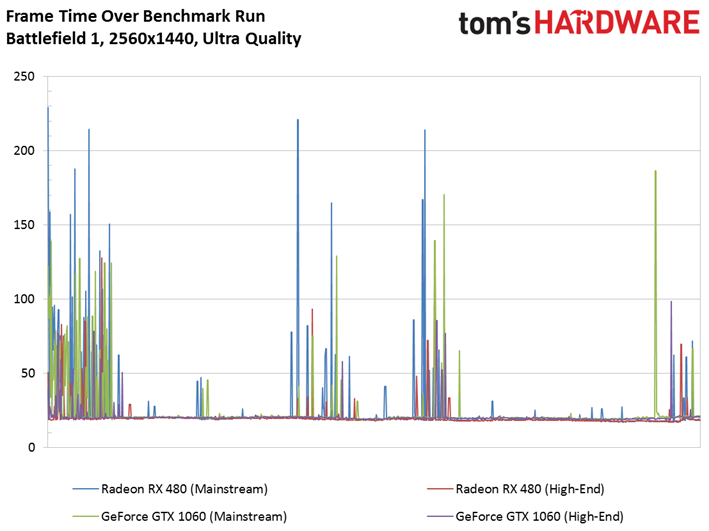

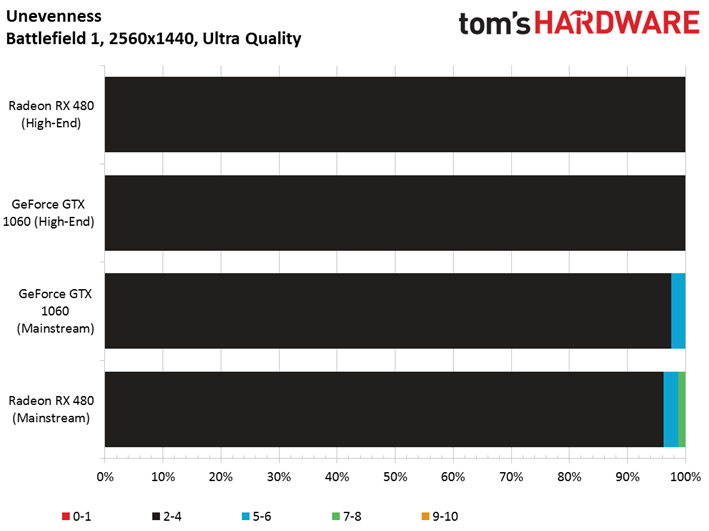
And yet, right out of the gate we see both cards suffer debilitating minimum frame rates on the FX machine. The frame rate over time line graph shows this happens at the beginning of our benchmark. Although the behavior isn’t exclusive to our mainstream configuration, we might guess that the slower hardware needs more time to finish crunching on assets before it’s able to reach peak performance.
Even after that point, though, AMD and Nvidia both demonstrate notable dips through this 80-second test sequence (reflected in the frame rate over time and frame time over time graphs). Frame time spikes happen on both PCs, but they’re far more problematic in terms of frequency and amplitude on the mainstream configuration.
The result is an unevenness index that’s mostly playable on the Core i7-6700K. AMD’s FX dips into dicey territory at times, and the Radeon RX 480 suffers worse than the GTX 1060 when this happens.
MORE: Best Graphics Cards
MORE: Desktop GPU Performance Hierarchy Table
MORE: All Graphics Content
Current page: RX 480 And GTX 1060: Mainstream Vs. High-End
Prev Page High-End PC, 3840x2160 Next Page Scaling: CPU Core Count-
envy14tpe Wow. The amount of work in putting this together. Thanks, from all the BF1 gamers out there. You knocked my socks off, and are pushing me to upgrade my GPU.Reply -
computerguy72 Nice article. Would have been interesting to see the 1080ti and the Ryzen 1800x mixed in there somewhere. I have a 7700k and a 980ti it would be good info to get some direction on where to take my hardware next. I'm sure other people might find that interesting too.Reply -
Achaios Good job, just remember that these "GPU showdowns" don't tell the whole story b/c cards are running at Stock, and there are GPU's that can get huge overclocks thus performing significantly better.Reply
Case in point: GTX 780TI
The 780TI featured here runs at stock which was 875 MHz Base Clock and 928 MHz Boost Clock, whereas the 3rd party GPU's produced ran at 1150 MHz and boosted up to 1250-1300 MHz. We are talking about 30-35% more performance here for this card which you ain't seeing here at all. -
xizel Great write up, just a shame you didnt use any i5 CPUS, i would of really liked to se how an i5 6600k competes with its 4 cores agains the HT i7sReply -
Verrin Wow, impressive results from AMD here. You can really see that Radeon FineWine™ tech in action.Reply -
And then you run in DX11 mode and it runs faster than DX12 across the board. Thanks for effort you put in this but rather pointless since DX12 has been nothing but pile of crap.Reply
-
NewbieGeek @XIZEL My i5 6600k @4.6ghz and rx 480 get 80-90 fps max settings on all 32 v 32 multiplayer maps with very few spikes either up or down.Reply -
Jupiter-18 Fascinating stuff! Love that you are still including the older models in your benchmarks, makes for great info for a budget gamer like myself! In fact, this may help me determine what goes in my budget build I'm working on right now, which I was going to have dual 290x (preferably 8gb if I can find them), but now might have something else.Reply

